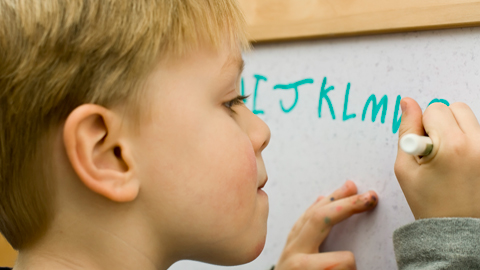Children learn quantifiers in the same order across languages

12/09/2016
Previous studies on number words - numeral quantifiers - already suggested that children learn them in order of increasing cardinality: "one", "two", "three". This new study shows that there is also a universal pattern for learning indefinite quantifiers, based on factors related to the meaning of each term and its use. Children learn these words although no-one teaches them explicitly what they mean or how they are used.
The results bring a new perspective into the debate on universality of language: there are universals in the process of how we learn language, as contrasted to universal properties of language itself. This research also opens the door to creating language assessment tests that are applicable to every language.
The study, published in Proceedings of the National Academy of Sciences (PNAS), is the result of the COST (Cooperation in Science and Technology) Action, which studies language development in European children. Led by the University of Cambridge, over 50 researchers from all around the world participated in the study. Anna Gavarró, lecturer in linguistics at the UAB, was in charge of the study conducted in Catalonia.
Researchers analysed how five-year-olds understood the quantifiers "all", "none", "some" and "most". The study was conducted with a total of 768 children and 536 adults who spoke one of 31 languages (from Cantonese to Catalan, Spanish and Basque; and from Polish to Urdu and Korean, etc.), representing 11 families of languages. The experiment consisted of showing them five boxes with zero to five objects inside. Researchers asked children whether a statement with a quantifier (for example, “All the apples are in the box") was true according to what they had seen in an image. The results were analysed taking into account criteria of totality, complexity (the meaning of the quantifier) and information (more or less precise statements).
"We've seen that children understand the meaning of these quantifiers at that age, regardless of the morphology or syntax of the language learned, and that they learn to use certain expressions before others, such as 'all' or 'none'", Anna Gavarró explains.
Children across languages acquired quantifiers in a similar order based on factors related to the words’ meanings and uses. For example, they understood “all” and "none" better than "some" or "most", suggesting that children acquire words that encompass totality at an earlier stage of development than words that denote a portion of a group.
Original article: Cross-linguistic patterns in the acquisition of quantifiers. PNAS 2016; published ahead of print August 1, 2016, doi:10.1073/pnas.1601341113